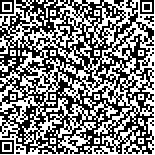本文已被:浏览 2188次 下载 3827次
Received:May 10, 2018 Published Online:December 20, 2018
Received:May 10, 2018 Published Online:December 20, 2018
中文摘要: 目的 应用关节镜下同期行冻结肩松解术与肩袖修补治疗肩袖损伤合并肩关节粘连,观察其患者肌肉力量及功能恢复的影响。 方法 以2014年12月至2016年12月64例肩袖损伤合并冻结肩患者为研究对象,按照治疗方法分为研究组(n=33)和对照组(n=31),研究组接受关节镜下同期行冻结肩松解术与肩袖修补治疗,对照组确诊后行3个月的肩关节功能训练,后在麻醉下接受手法松解及二期肩袖修补术治疗。观察两组手术情况、肩关节活动度、患肢肌肉力量、美国肩肘外科协会(ASES)评分及视觉模拟(VAS)疼痛评分。 结果 研究组33例均顺利完成同期关节镜下冻结肩松解术与肩袖修补术,对照组31例中23例于功能训练后进行二期肩袖修补术,有8例无法忍受疼痛提前进行手术。术后3、6、12个月两组前屈、外展、外旋、内旋活动度均较治疗前逐渐升高(P<0.05),研究组仅术后3个月前屈、外展、内旋活动度显著小于对照组(P<0.05)。术后12个月,两组患肢前屈、外旋、内旋的肌肉力量及ASES评分均较治疗前显著增加(P<0.05);VAS评分较治疗前显著降低(P<0.05),两组间比较差异无统计学意义(P>0.05)。 结论 与二期肩袖修补术相比,关节镜下同期行冻结肩松解术与肩袖修补术也能有效治疗肩袖损伤合并冻结肩,提高患者肌肉力量,促进肩关节功能恢复。
Abstract:Objective To observe the effects of simultaneous arthroscopic lysis of shoulder joint adhesions and the rotator cuff repair on muscle strength and function recovery in patients with rotator cuff injury and shoulder joint adhesion. Methods Sixty-four patients with rotator cuff injury combined with shoulder joint adhesion from December 2014 to December 2016 were selected as study objects and divided into study group (n=33) and control group (n=31) according to different treatment method. The simultaneous arthroscopic lysis of shoulder joint adhesions with rotator cuff repair was performed in study group, and two-stage rotator cuff repair was conducted after 3-month shoulder function training and surgery for relaxation in control group. The operative situation, shoulder mobility, muscle strength of affected limbs, American Shoulder and Elbow Surgery Association (ASES) score and visual analogue scale (VAS) were observed in two groups.? Results The operation was successfully completed in study group. In control group, 23 cases underwent two-stage rotator cuff repair after function training, and 8 cases received surgery ahead of time because of unbearable pain. After postoperative 3-, 6-, 12-month, the activity degrees of anteflexion, abduction, external rotation and internal rotation in both two groups gradually increased compared with those before operation (P<0.05), and they were significantly lower in study group than those in control group only 3 months after operation (P<0.05). At 12 months after operation, the muscle strength of anteflexion, external rotation, internal rotation and ASES scores of affected limbs in both two groups were significantly higher than those before treatment, and VAS score was significantly lower than that before treatment (all P<0.05). However, there were no statistical differences in them between two groups (all P>0.05).? Conclusion Compared with two-stage rotator cuff repair, simultaneous arthroscopic lysis of shoulder joint adhesions and rotator cuff repair for treatment of patients with rotator cuff injury and shoulder joint adhesion can also effectively improve the muscle strength and promote the recovery of shoulder function.
keywords: Lysis of shoulder joint adhesions Rotator cuff repair Rotator cuff injury Shoulder joint adhesions Muscle strength Forzen shoulder
文章编号: 中图分类号: 文献标志码:A
基金项目:上海市科学技术委员会科研计划项目(15401150308)
引用文本:
